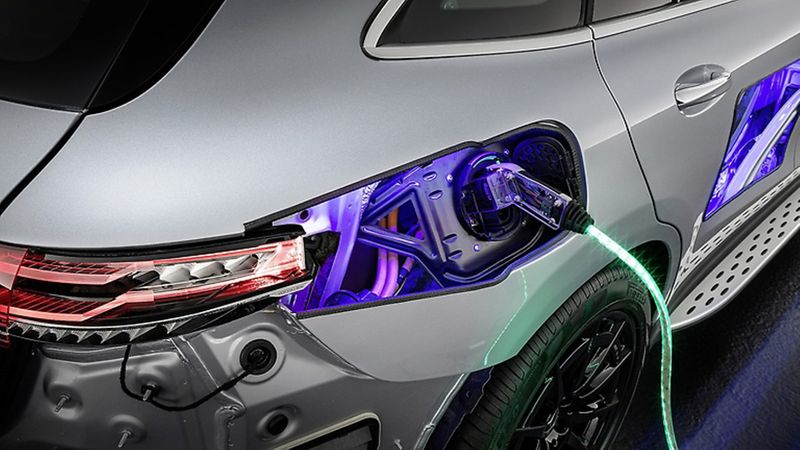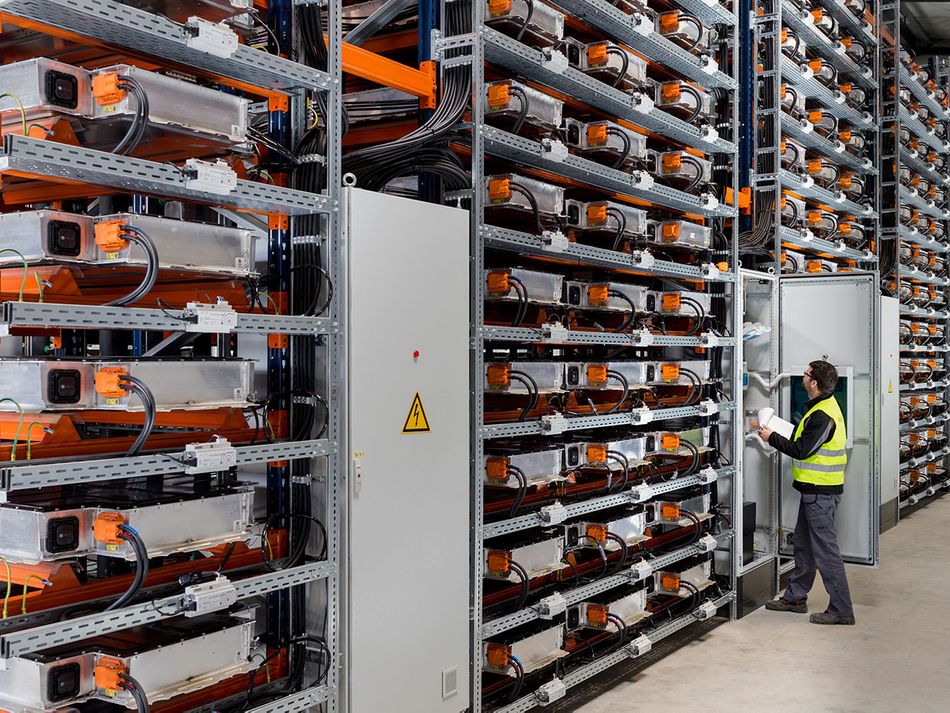Wire-shaped flexible capacitors deliver innovation by freeing size and location restrictions.
A supercapacitor that utilizes form takes energy storage ‘off board.’

Daimler
Energy systems are increasingly becoming systems of variable power demand. From large-scale smart grids to small personal electronic devices; the variety of functions and use cases require different power requirements. Supercapacitors are devices that can charge and discharge energy very quickly and are becoming increasingly important to meet this demand. However, traditional supercapacitors are square-shaped devices that can take up to as much as 50% of printed circuit board real estate, reducing their ability to be broadly applied in small and weight-conscious devices. Usually, the industry responds to similar problems by sacrificing the value added by supercapacitors and using the space to add new capabilities, but an alternative approach has been taken with the delivery of an entirely new form factor so that sacrifice is a thing of the past.
A new supercapacitor
Cable-Based Capacitors (CBC), a proprietary technology of Orlando-based Capacitech Energy, are wire-shaped, flexible power storage devices with supercapacitor performance. CBC’s are designed to deliver energy very quickly and in a thin enough wire shape that they can be used in entirely new ways. For example, the CBC can be built inside of a wiring harness, incorporating distributed power storage capability into a product’s wiring infrastructure.
The unique form offers numerous space and aesthetic advantages, perfect for adding redundancy or offsetting components from printed circuit boards. Supercapacitance means they have a higher energy density than standard capacitors do and a higher power density than batteries. This flexibility and increased utility could have widespread implications in industries such as IoT, electronics, particularly portable and wearable devices, energy storage, and the automotive industry.
IoT market
With the IoT market growing rapidly and millions of devices installed each year, questions of infrastructure maintenance are looming. Rechargeable or not, batteries represent a single point of failure and one with a short service life. For this reason, energy harvesting technologies are gaining a foothold in battery-powered IoT devices, although they lack the ability to provide enough power to replace the battery altogether. The size and flexibility of the CBC allow it to be incorporated into small enclosures—increasing the ability to keep IoT devices tucked away discretely. Energy harvesting technologies can be used with the CBC to replace batteries, which would be a money saver over the total service life of a device, thanks to the CBC’s long service life.
The industry may be on the precipice of massive expansion in connectivity. Leveraging the supercapacitor’s power density can help extend the range of communication, reducing the limitations imposed on connectivity by how far a signal can travel. Given that the distance a signal can travel is proportional to the power applied to the signal, doubling the peak power of the device by using the CBC can also double the range the signal could travel. For a Smart Building IoT system with 200 battery-powered devices, pairing a CBC with an energy harvesting module will save thousands of dollars over its service life.
Wearables
Also benefitting from the form factor of the CBC are portable devices and wearable electronics. The cutting edge of phones, cameras, and fitness trackers, and other smart wearables is always how they can be smaller, lighter, more flexible. This development has been bottlenecked by the size of the electronic components in a circuit. While the CBC is not any smaller than a traditional supercapacitor that might be used in any of these devices, they are able to be folded into small enclosures and used off the circuit board. For example, the CBC could be incorporated into shoes to create smart running equipment. On top of reducing overall size, saved space can be used to add features or increase the performance of existing features.
Energy Storage systems
The high density of the CBC can also serve as a complement to energy storage systems and even extend energy storage infrastructure. There are devices designed for sustained delivery of energy, and there are devices for quick delivery, but an ideal energy storage system will accomplish both. Capacitech’s supercapacitors can alleviate what is often a design tradeoff when they are built into the cabling that connects the power source to load. This can inject additional capacity into the system, protect batteries from fluctuations in power, and address other common tradeoffs such as size, weight, and power constraints.
As it stands, these supercapacitors are poised to deliver over ten times the power than even the best batteries on the market—and more power means the ability to turn on a larger load than batteries of fuel cells can on their own. The flexibility of the CBC design means that there is no need to eliminate batteries in order to adopt supercapacitors. They’re designed to be added to the existing infrastructures of both solar panels and batteries; anywhere the system already uses cabling, supercapacitors can be added to store energy, deliver more power, and expand design possibilities. And with the solar industry pressed to produce more with less, the inclusion of CBCs can do a lot to increase peak power and deliver the initial rush of power needed to turn on loads in off-grid panels.
 BMW's battery storage farm at its plant in Leipzig, Germany. Image credit: BMWTransportation
BMW's battery storage farm at its plant in Leipzig, Germany. Image credit: BMWTransportation

The transportation industry is rapidly adding electrification to everything. The expanded design options posed by CBC could increase possibilities by leaps and bounds. The automotive industry has always made use of capacitors in its systems, but their role has been expanding as the management of electrical current and circuits has become integral to alternative propulsion techniques. Supercapacitors have been used to supplement and even replace batteries in both electric vehicles and plug-in hybrids.2 Similar to its addition to energy storage infrastructure, the CBC can run within the existing wiring to improve performance and extend operating life.
This integration into the wiring harness creates the advantage of storing energy closer to the load. This means increased power filtering to remove noise between systems and power supply and increased means to address the unique automotive challenge of reliably regulating the voltage from the battery to power sensors and processors. Ability to utilize the entire existing wiring system—again, anywhere you already have wires, you can have a supercapacitor—also means increased potential for enabling a connected car and all of the remote sensors that have become the trend in automotive design. This is not to mention cost benefits and the potential for electric cars to become lighter, roomier, and more affordable.
Inside the world’s wiring infrastructure.
Capacitech, has built this technology with the belief that the future hinges on energy storage—and this incomplete list of exciting use cases may serve as some proof. They are working to build energy storage into existing wiring infrastructure and enable next-gen technologies. To this end, CBC components will be available direct and through component suppliers as they work to offer more industries the potential for compact design and increased power.
Summary
This supercapacitor design comes at a time when many industries are poised for the next generation of technology and could be one of the pushes that gets them there. One of their most attractive features is that it comes with no engineering tradeoffs in existing designs—it is not intended to replace but to augment and expand upon. As technologies push for increased connectivity, sleeker designs, and increased capabilities and features without giving up space or convenience, the CBC presents numerous solutions and possibilities: peak power assistance, backup power, reduced EMF/EMI, miniaturization, and ultimately a discrete and distributed network of power storage.
Complete information on product specs, as well as ordering and delivery, can be found on the Capacitech site.
References and further reading
1. G Gautham Prasad et al 2019 IOP Conf. Ser.: Mater. Sci. Eng. 561 012105
2. Oyama, H. & Shinzato, T. & Hayashi, K. & Kitajima, K. & Ariyoshi, T. & Sawai, T.. (2008). Application of superconductors for automobiles. 22-26.
